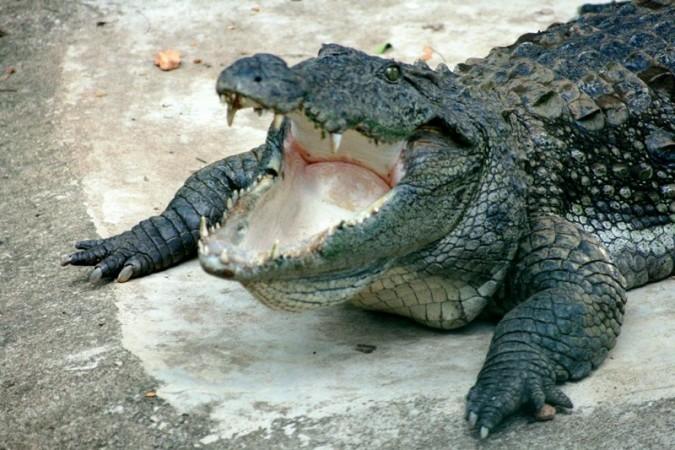
A giant tooth of an enormous aquatic predator has been recently uncovered by some paleontologists from UK. The researchers claim that it is the largest prehistoric fossil tooth found till date in the United Kingdom.
The tooth was found close to Chesil Beach in Dorset. The tooth had a broken tip and measures around 5.5 cm in length and most likely belonged to primitive family member of recent crocodiles called Dakosaurus maximus.
The massive animal lived about 152 million years ago during the early and mid Jurassic period, and swam across the shallow seas of Europe. It belonged to the family of aquatic creature called known as thalattosuchians.
Thalattosuchians were also called sea crocodiles or marine crocodiles. Some of the early members of these creatures were also found in non-marine deposits. They had extended body and tail with relatively shorter forelimbs and hind limbs that were mostly likely used for manoeuvring.
Scientists after examining the strange shape of the gigantic creature's skull and teeth realized that it during its period, used to feed upon modern-day whales. The researchers assumed that the creature used its short, broad jaws to swallow the fish and used its sharp teeth to bite its larger preys into smaller pieces.
"Given its size, Dakosaurus had very large teeth. However, it wasn't the top marine predator of its time, and would have swum alongside other larger marine reptiles, making the shallow seas of the Late Jurassic period exceptionally dangerous." Mark Young, one of the researchers who examined the giant creature, said in a news release.
The fossil of the largest creature was discovered from the seabed and was then sold out to a fossil collector in an online auction. Curators and researchers from University of Edinburgh and the Natural History Museum identified the fossil and placed it in the Natural History Museum fossil collection.
The findings also revealed some more of the prehistoric creature. Its tooth explains how big the creature could grow. Researchers are hopeful in finding more information on the creature and how it behaved in earlier days.
The findings have been published in the journal Historical Biology.

















